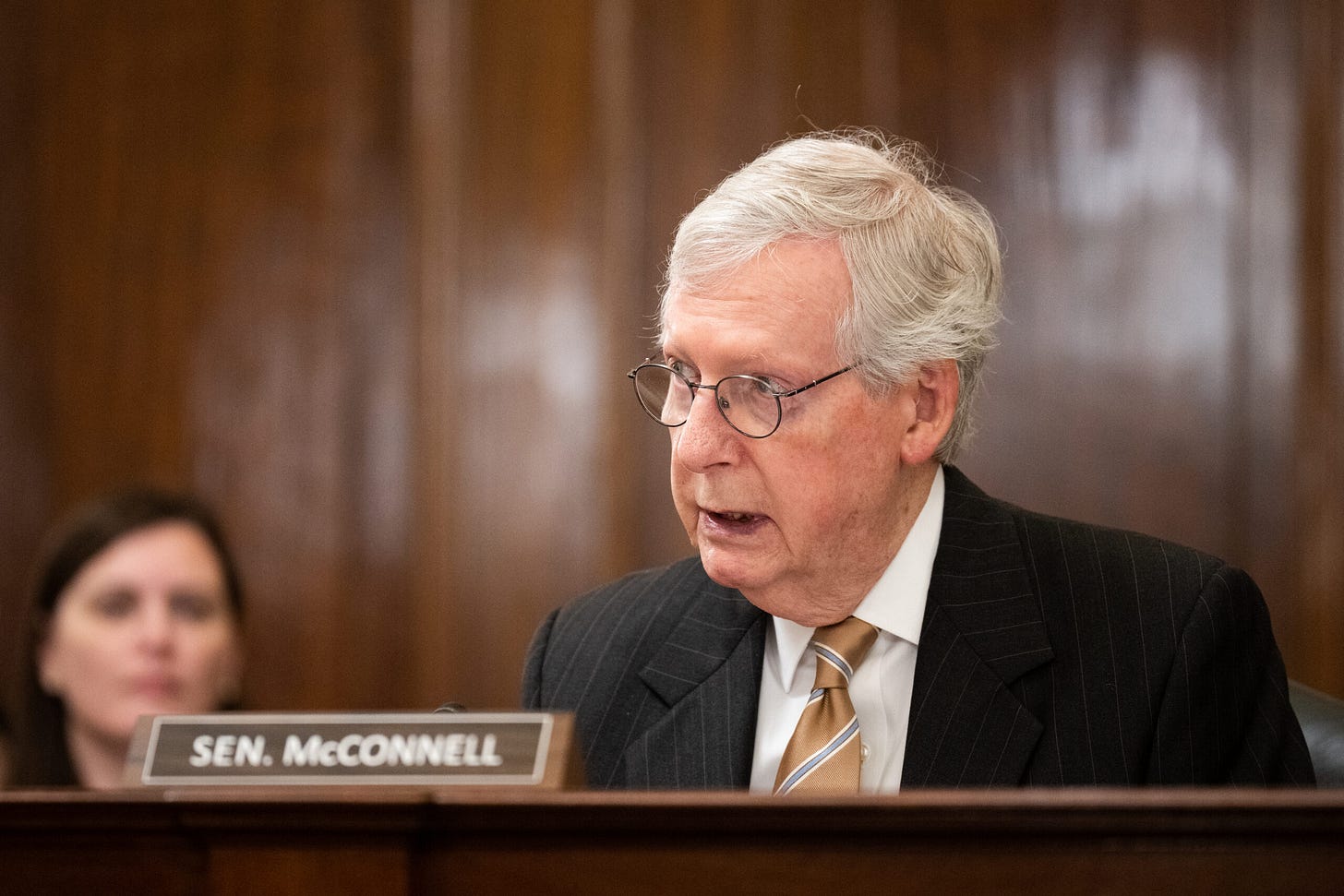The Electoral Count Act Is Actually an Engineering Problem
Don’t focus on the politics. Focus on outcomes management.

There are now several proposals for fixing the Electoral Count Act (ECA) and a growing consensus—especially after developments in the Senate yesterday—that a set of bipartisan reforms will be passed sometime in the next few months. That’s good news.
But fixing the ECA is not just a check-the-box exercise. We need to ensure that the reforms we enact are as effective as possible in shoring up the vulnerabilities we’ve identified. And while there’s consensus that the ECA needs to be fixed, there’s a wide variety of opinion on the best way to fix it.
Maybe we should approach the reform not as a political project, but as an engineering task.
The simplest way to think about the ECA is as a “machine” that’s designed to turn electoral votes into a president. And if you do, you can then apply some of the techniques used to determine the reliability of an airplane or a spacecraft—like computing failure probabilities—to the ECA.
We have done exactly that, creating a Monte Carlo simulation of the Electoral Count Act to help us analyze how and when it might fail. One of the great advantages of our model is that the political dimension disappears. There is only “Party A” and “Party B,” and there are no value judgments, only statistics.
This approach cannot tell you whether the system will “work” properly in any particular election. But it can show you which set of ECA reforms will perform more reliably under specific sets of conditions. For example, we cannot tell you whether someone will successfully manipulate the ECA in the 2024 election and install the losing candidate as president. But we can tell you, from a statistical perspective, which reforms would make it more difficult for bad actors to break the system and which reforms wouldn’t. There’s still work that needs to be done—we are currently analyzing the Presidential Election Reform Act, a new bill sponsored by Rep. Zoe Lofgren and cosponsored by Rep. Liz Cheney that was passed by the House last week on a near-party-line vote—but some conclusions are already clear.
For example, the Electoral Count Reform and Presidential Transition Improvement Act of 2022, proposed by a bipartisan group of senators, seeks to block what has become known as the “Governor’s Gambit”—a bad-faith tactic by a sitting governor designed to change the result of a close presidential election by certifying the wrong electoral slate. That’s an excellent idea and would make the failure of the system less likely.
Unfortunately there are some critical weaknesses in the ECA that aren’t getting addressed in currently proposed reforms. One very basic issue, the “denominator problem,” has to do with how you mathematically determine what constitutes a majority in the event that a state’s electoral votes are rejected by Congress. For example, suppose that California’s 54 electoral votes were rejected by Congress for some reason. Does it still require 270 electoral votes to win or does it now take only 243? The current version of the ECA doesn’t answer that question.
Nor do any of the current reforms address another serious failure point: the “delay and switch” scheme, in which the House could simply refuse to vote on an objection. This would permanently stall the electoral count process and install the speaker of the House as “acting” president.
This scenario is a concern because it only requires the party seeking to break the machine to control the House. And it isn’t far-fetched. Donald Trump was pushing to “send [the 2020 election] back to the states to recertify” and multiple Republicans, like Ted Cruz, James Lankford, and Paul Gosar, were making speeches in Congress on January 6th that advocated “pausing” the counting of electoral votes. One way to fix this is to include a specific date in the ECA on which it must be determined whether any presidential candidate has received a majority of electoral votes.
There are some reforms that the conventional wisdom views as important, but that actually would not do much to harden the ECA. For instance, all currently proposed reforms would increase the number of votes required to launch a formal objection. But unless the threshold became a supermajority, this would do little to increase the ECA’s reliability.
The reason increasing the number of required objectors doesn’t improve reliability very much is because in most scenarios, “breaking” the ECA and electing the wrong president requires control of at least one house of Congress. In other words, unless there is a majority in either the House or the Senate willing to back it up, an objection usually has no effect other than to temporarily delay the count. In any event, when there are two slates of electors from a state—the most dangerous scenario—an objection is effectively automatic.
Fixing the ECA requires ignoring the politics of the day and taking a long view. The choices the drafters of the existing Electoral Count Act made still impact our democracy 135 years later. Even though it’s in everyone’s interest to make the machinery of electing a president more reliable, that’s not an easy thing to do. But it is, nonetheless, a necessary thing to do.

